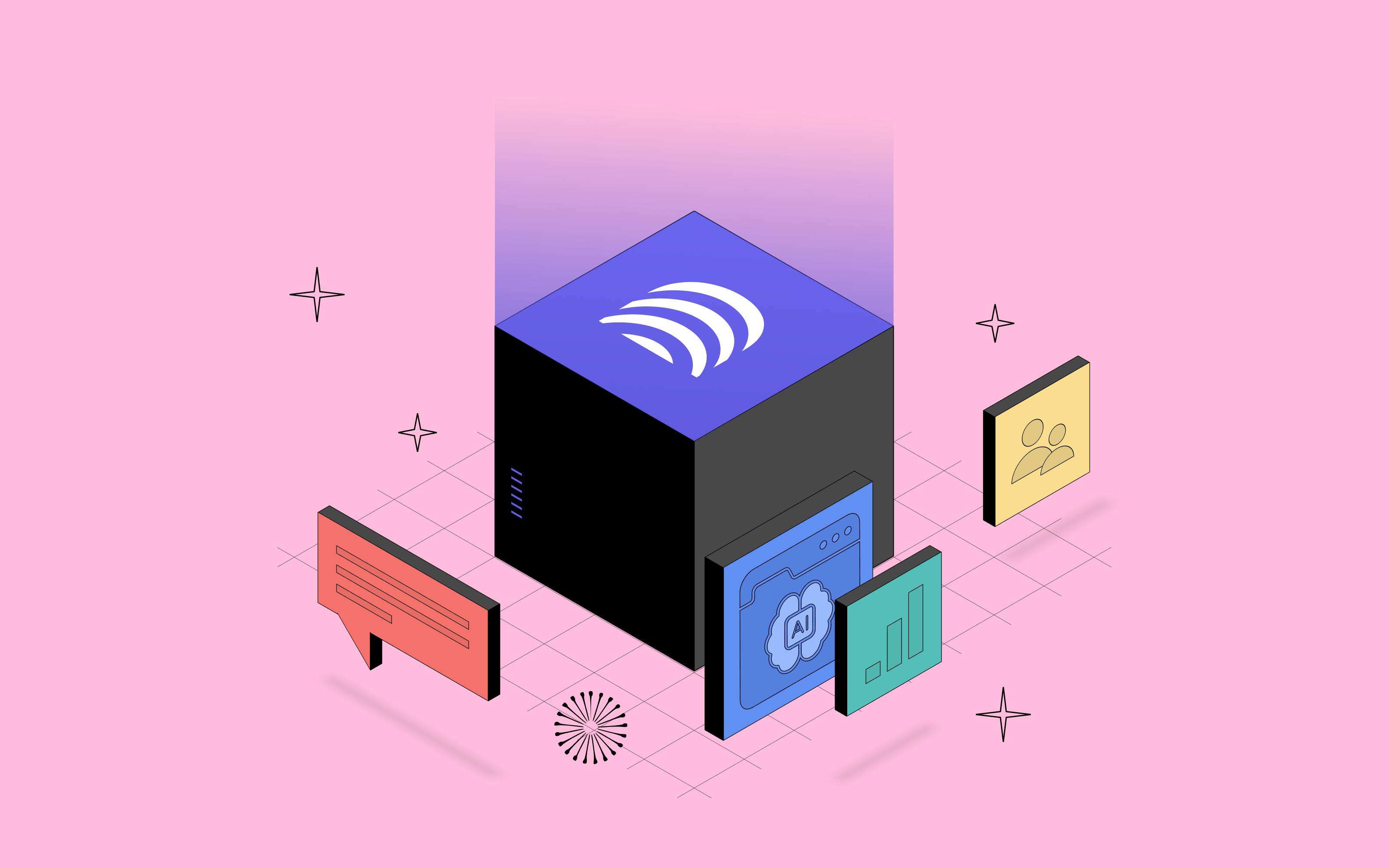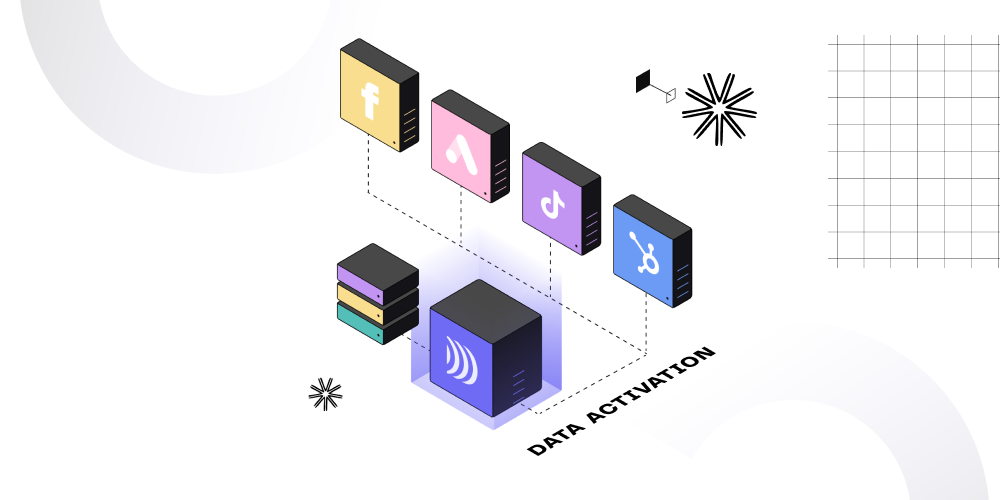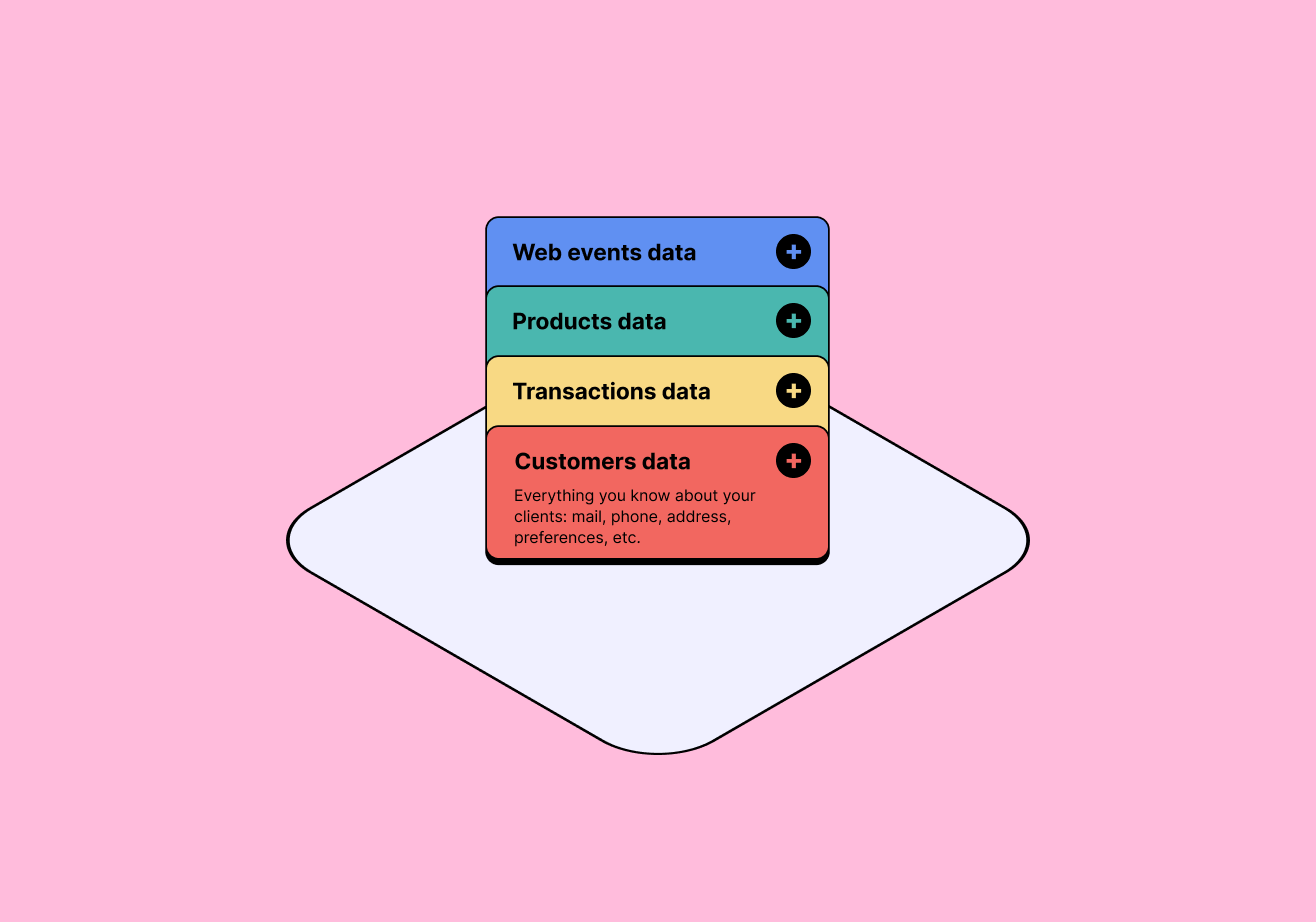
Why using First Party data is crucial?
4min • Last updated on Feb 13, 2025

Alexandra Augusti
Chief of Staff
With the proliferation of privacy regulations and the limitations imposed by browsers on third-party cookies, third-party data is becoming less and less relevant. To succeed in marketing operations, utilising one's own data becomes essential to continue personalisation initiatives and maintain performance.
Activating First-Party data will be the biggest trend this year. It is therefore crucial to start developing your strategy as soon as possible.
What is first-party data?
First-party data is collected directly from customers through various touchpoints such as websites, apps, social media, customer surveys, and internal databases. It is considered the most valuable data for understanding the customer experience, as it is reliable, cost-effective, and obtained with proper consent.
With first-party data, brands can gain insights into customer behavior, preferences, and interactions, enabling them to deepen customer relationships and enhance the return on investment (ROI) of their digital marketing campaigns.
Examples of 1st party data:
Website Analytics: Data collected through tools like Google Analytics, which tracks user behavior on your website, such as page views, clicks, and time spent.
Customer Relationship Management (CRM) Data: Information gathered from interactions with customers, including purchase history, contact details, and preferences.
Email Subscriptions: Data obtained through users subscribing to your newsletter or providing their email address for updates.
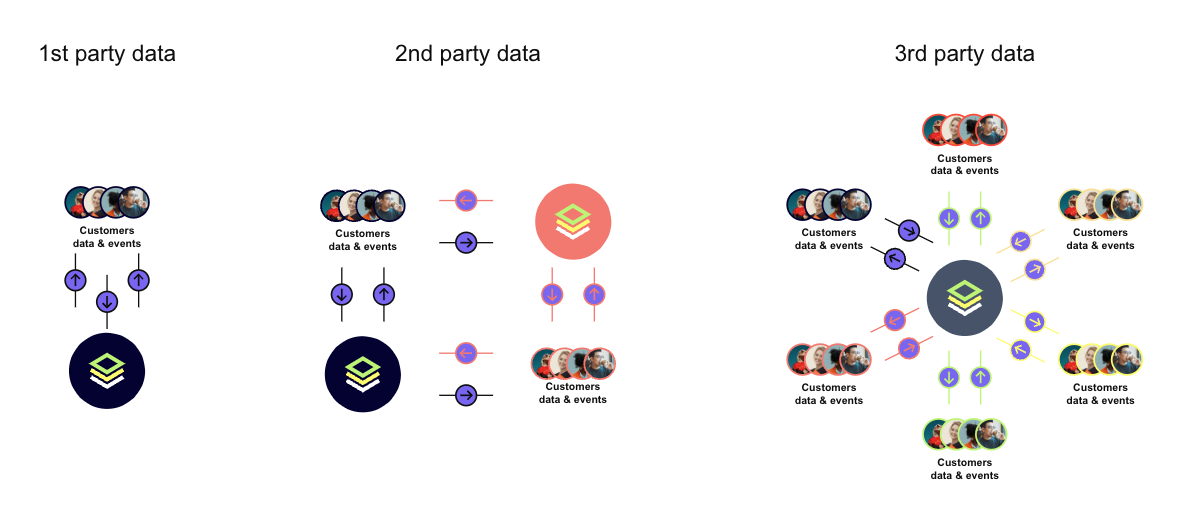
What are 1st, 2nd and 3rd party data?
Activating first-party data becomes crucial
Using one's own data in marketing campaigns has always been a good strategy. That's why Customer Data Platforms are often the most popular option for companies.
However, recent developments, already well underway over the last two years, have accelerated the need to activate 1st-party data:
Browser restrictions are becoming increasingly stringent. Cookies deposited by advertising platforms (where still possible) have limited lifespans. For instance, Safari's Intelligent Tracking Prevention (ITP) functionality defaults to a 7-day limit for third-party cookies and reduces it to 1 day in certain cases. Consequently, a user who visits your website and returns 10 days later is considered as a new visitor.
👉🏼 It is relevant to find a way to differentiate new visitors from those who have previously visited the site. Fortunately, your first-party data can help with this!
The end of third-party cookies is approaching rapidly. This will have an impact on retargeting and lookalike campaigns, as well as on performance measurement. Google Chrome followed in the footsteps of Safari and Firefox. The Mountain View giant had announced the deactivation of third-party cookies for early 2025, before backtracking last July. Stay tuned.
📌 Activating first-party data addresses the end of third-party cookies. By enriching the data available to advertising platforms and sending them strong signals (such as conversion events), retargeting and acquisition campaign algorithms can still be effective. Having an overall view of the customer journey also allows for better performance measurement.
Artificial intelligence is increasingly predominant in managing advertising campaigns. Advertising platform algorithms decide on bids and audiences to target (especially in the case of lookalike targeting). The finer the knowledge of customers (i.e., fueled by First-Party data), the more campaign results can be optimised through Machine Learning.
Before 2024, collecting customer interactions with an advertiser's website/application was immediate. Advertising platform algorithms could feed on this data and maintain a certain level of performance.
Since then, the links between the interactions on the website/application and advertising platforms have become much more limited due to these changes. Activating First-Party data is therefore necessary.
Activating first-party data involves transferring user data, such as the customer's email address, to a third-party tool.
If this customer has an account linked to this address, platforms are more likely to identify this user and attribute their interactions to your campaigns.
How do you activate your own data?
Activating first-party data in advertising platforms already implies being able to centralise, segment, and orchestrate this data. However, this is not so simple!
Marketing touch points with customers/prospects are multiplying. Omnichannel involves an increasing number of interactions with customers, both online and offline. Consequently, customer data is often scattered across different tools—product backend, CRM, Customer Service tool, etc. It's complex in this context to understand the entire customer journey.
To address this challenge, advertisers will be compelled to create a unified view of all their customers (aka Customer 360) to keep track of all touch points, both online and offline.
Once this 360-degree view is created, it "simply" involves segmenting and orchestrating this data to continue operating effectively on Meta, Google Ads, TikTok, etc.
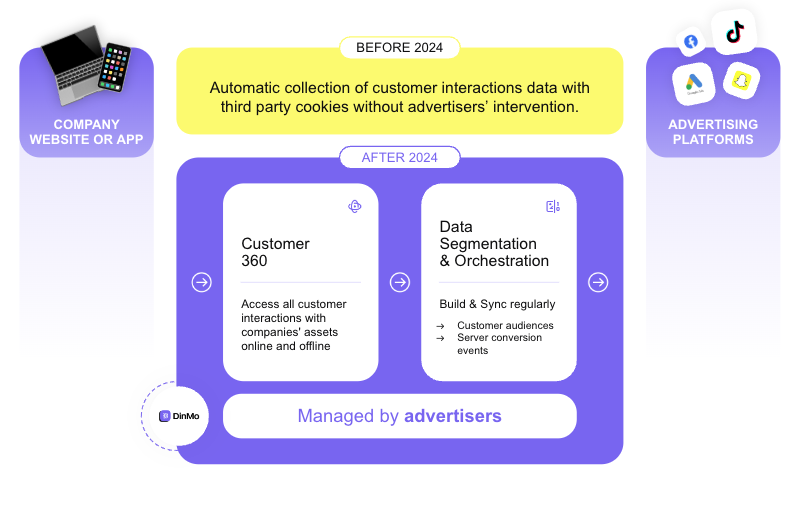
Companies will have to manage the centralisation, segmentation, and orchestration of their data.
To meet the challenge of Customer 360, over 75,000 companies have already invested in cloud data warehouse solutions.
But there's a catch. Segmenting and orchestrating this data are not that simple. Despite data being centralised in a data warehouse, it is not easily usable across all business tools (advertising platforms, customer engagement, support tools, etc.).
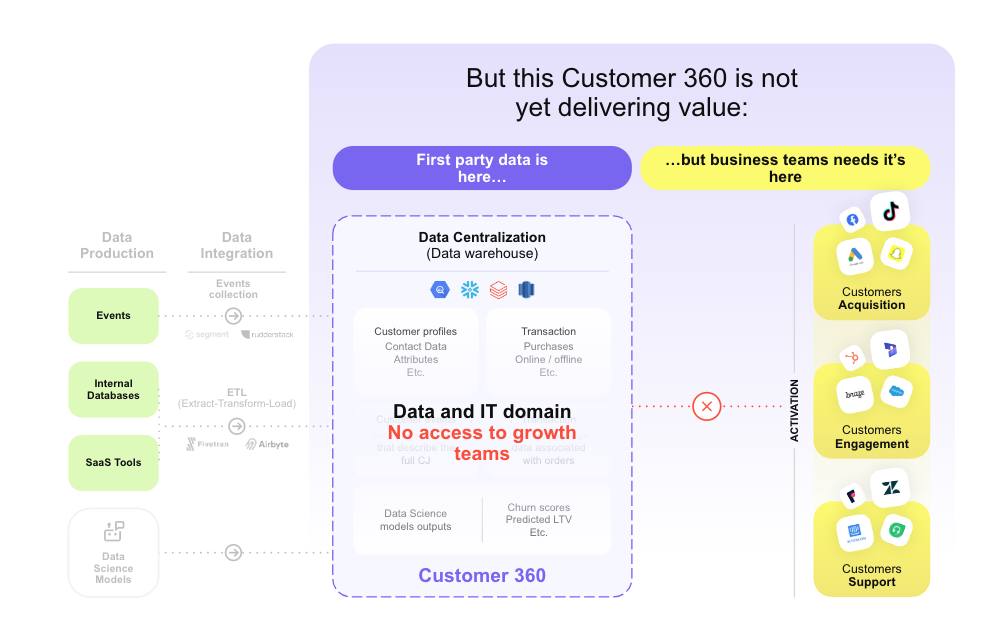
Customer 360 is only valuable if it is accessible to business teams
If a company decides to do everything on its own, operations can prove to be very cumbersome: a significant number of segments, the need for technical knowledge in code and SQL, difficult-to-maintain data pipelines, etc.
💡 Fortunately, modular CDPs allow direct connection to your data warehouse where data is consolidated. This means you can segment your customer base in a matter of minutes and activate your audiences with a single click.
What’s next?
In a data-centric world, the activation of First-Party data is no longer an option but a necessity.
Fortunately, with DinMo, starting to activate your data has never been easier and more accessible. We offer a simple and effective approach to data activation. You can leverage your own data across more than 40 different integrations. Simply connect your data model, create segments using our visual Audience Builder tool, and send them wherever you want.
☕️ Want to see how data activation can transform your operations? Feel free to come talk to us.














